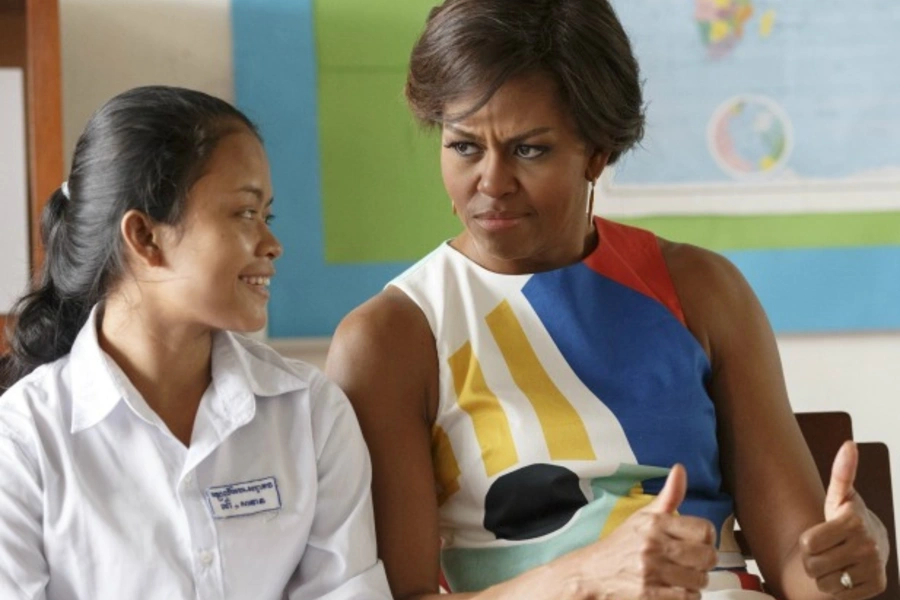Building the Obamas’ Legacy: Expanding the Peace Corps to Advance Girls’ Education

More on:
“When girls get educated—when they learn to read and write and think—that gives them the tools to speak up and to talk about injustice, and to demand equal treatment. It helps them participate in the political life of their country and hold their leaders accountable, call for change when their needs and aspirations aren’t being met.” These were the words of First Lady Michelle Obama as she addressed Peace Corps volunteers in Cambodia last weekend, part of her trip to promote the administration’s Let Girls Learn program.
In fact, the Let Girls Learn initiative is a consolidation of many programs that already existed to support girls’ education—including those under the U.S. Agency for International Development and Peace Corps—now with the presidential stamp.
Beyond repackaging and rebranding, the White House also added 650 new Peace Corps volunteer positions specifically tasked to work on girls’ education. At nearly 10 percent of the Peace Corps’ current size, these new volunteers are not insignificant. This expansion remains in line with the original mission of the Peace Corps founded by President John F. Kennedy in 1961; the first-ever Peace Corps mission to Ghana comprised fifty-one teachers, and nearly two-fifths of the current Corps focuses on education.
Founded during the Cold War as a means of winning hearts and minds among nonaligned developing nations, the Peace Corps’ mission is to provide trained manpower and to promote understanding between Americans and people in the countries served. Because Peace Corps is a small, cost-effective operation with a superb reputation across party lines, both Presidents George W. Bush and Barack Obama separately pledged to double the size of the Peace Corps.
President and Mrs. Obama’s personal announcement of Let Girls Learn—including the expansion of Peace Corps’ capacity to support it—demonstrates a strong commitment to girls’ education as part of the U.S. foreign policy agenda. With the help of celebrities and social media, the White House has marked girls’ education abroad as a priority for the administration and a piece of the Obamas’ presidential legacy.
As the first lady’s comments to Cambodia Peace Corps volunteers indicate, the White House’s support of girls’ education is not only an important end in and of itself. Investment in girls’ education pays dividends for women’s rights, economic growth, and stability abroad.
More on:
 Online Store
Online Store